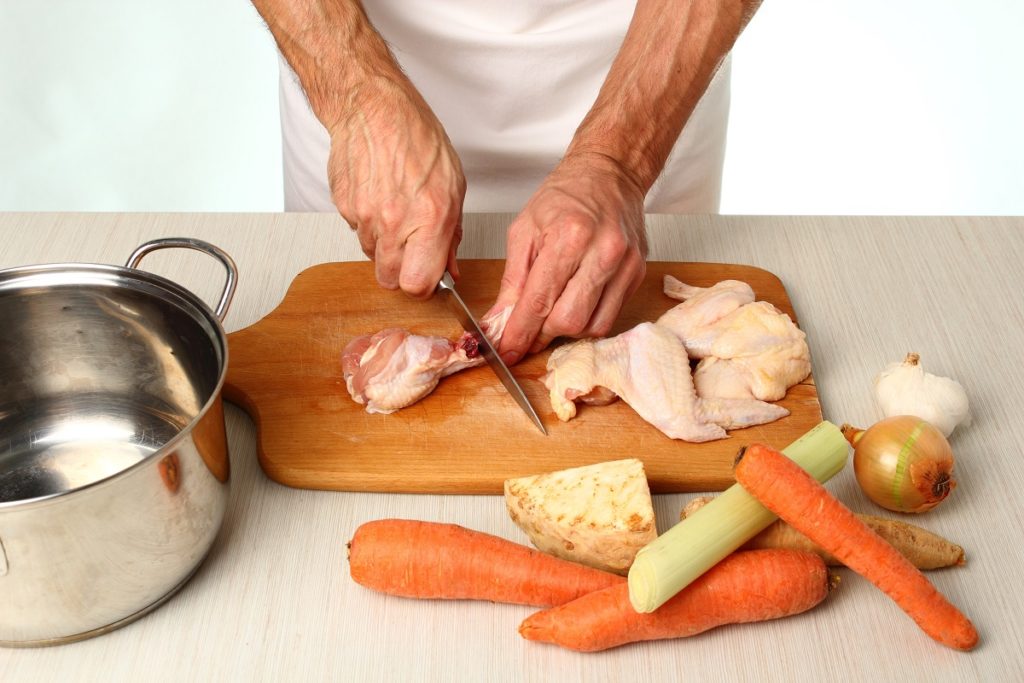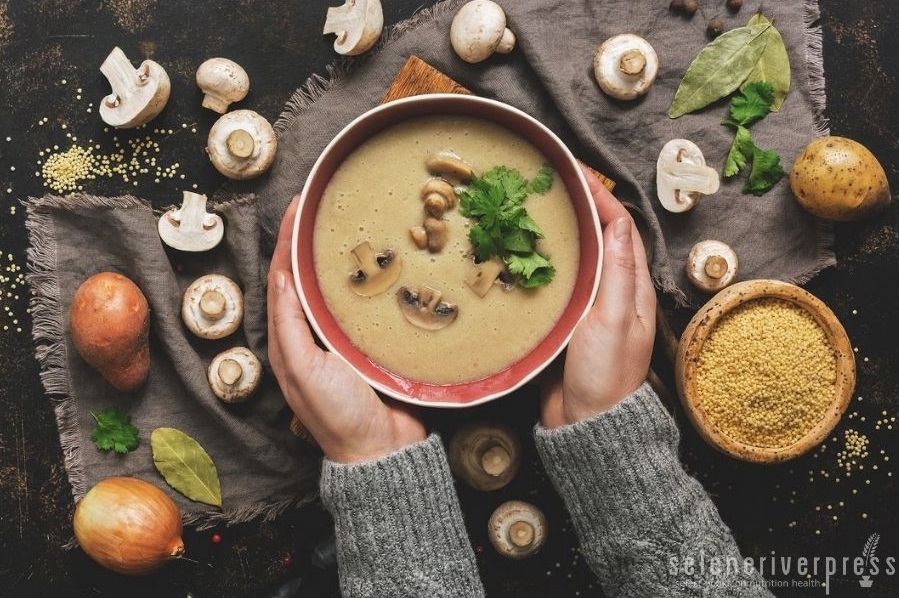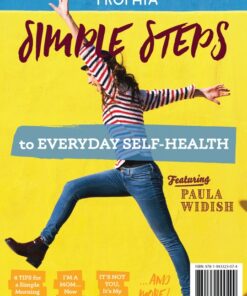Whenever someone tells me that they’re not much of a cook, but they want to learn, I always steer them in the same direction—one dish with endless variations that’s so forgiving that you can’t go wrong. This seasonal favorite will build your cooking confidence every time you make it.
What is it, you ask? Exactly what we all crave when the temperatures drop: soup!
Seriously, soup is one of the most versatile dishes out there. And once you learn the basics, you’re set. (It’s the perfect meal to get your kids to help with too.) Super bonus: soup comes together pretty darn quickly, and it’s a great way to use up any perishable items that may otherwise end up in the garbage can.
What are these basics I speak of? I’m glad you asked. First off, just like any new recipe, it’s important to read it all the way through before you get started. And you may need to do a little shopping if you don’t have a well-stocked kitchen.
Next, you’ll need a vessel that’s big enough for all the soup you’ll be making. If you own a stockpot, great. Go ahead and set it on a burner on your stovetop. If not, just grab the biggest pot in your cupboard.
Now you’re going to choose a fat. Well, not just any fat. Make it a good, healthy fat. Butter, bacon drippings, chicken schmalz, and avocado oil are all good options. Whichever you choose, put a good amount (a couple tablespoons to start) in the bottom of your pot. Down the road, I encourage you to build on your self-health education by learning why fat is good for us and what kind of fats are best to keep on hand.
Now you get to choose what veggies you’d like. Head to the crisper and look around. Don’t just look on the surface—dig to the bottom and see what needs to be used right now. Maybe there’s a pepper you forgot about or a bunch of celery that’s gone limp. Since you’re going to sauté them up, they’re gonna work just fine for your soup. If you like, grab some crunchy carrots and any other veggies that you like to eat. You may want to start with the classic mirepoix of onion, carrots, and celery (one small onion, two carrots, and two stalks of celery). Oh, you may want to stop by the pantry for an onion and head of garlic too. It’s that simple.
After you’ve washed the veg, you’ll need a cutting board and chef’s knife. Hopefully you have these basic kitchen tools. If you don’t, now is the perfect time of the year to make gift suggestions to your loved ones. After all, you can’t be a self-healther without some simple kitchen tools.
Assuming you can work with what you have, get chopping. If you’re new to cooking, you’ll want to do all of the chopping before you turn on the burner and start getting your fat warm and melty. But if you’re relatively speedy at this essential cooking skill, go ahead and turn on the burner. As you’re chopping, aim for your veggies to be about the same size, and add them to the pot as you go. The smaller you chop them, the faster they’ll cook. And don’t be shy! There’s nothing wrong with adding your favorite peppers, spicy or not, and some minced garlic, which we put in almost every dish we cook. Be sure to season with pepper and some sea salt for flavor.
Okay, so your veggies are sauteing in the lovely fat you’ve chosen. Well done! Now you need to think about your protein and what flavor of stock or broth goes well with it. If you’re planning to use beans, you may want veggie stock. If you’re going with bite-size chicken thighs, chicken is the obvious choice. Chicken stock will go with anything and is the most flavorful.
Choosing your protein is another great way to use things up in your refrigerator. If you have some leftover baked chicken, just dice it up and then add it at the end of the cook time—all you need to do is warm it through. The same is true for prepared beans. If you’re using something like raw chicken or ground beef, you’ll want to brown them a little before you add the broth.
Once the veggies have softened up a bit (5–10 minutes depending on their size), and you’ve browned the raw meat if you’re using it, go ahead and add the stock. We feed five people in our house, so we often start with 8 cups of stock. How do you know how much is enough? When it looks like the kind of soup you like to eat! If you’re ingredients aren’t floating, add more broth. If you run out of broth, add some water. It’s truly that simple.
Bring it to a boil, and then turn it down to simmer for 15–20 minutes. Next is the taste test to see if the broth needs more seasoning. This can be a little tricky, but don’t be intimidated. It will still be tasty even if you stick with salt and pepper. When you gain more confidence, you can start experimenting with more complex seasonings from spices like oregano or thyme. If you aren’t sure what spices go well with the ingredients you’ve chosen, a quick online search can offer up all sorts of spice blends. After you add more seasoning, give your soup a stir and then another taste. It’s good to go when your automatic reaction is “Mmmmmm.”
Guess what? You just made soup! You also practiced all sorts of cooking skills—chopping, sauteing, boiling, and simmering. (In my opinion, this has a direct impact on your overall health.)
If you’ve been wanting to get your family more involved in the kitchen, check out Trophia: Simple Steps to Everyday Self-Health. You’ll find tips on everything from making the weekly meal plan a family task to establishing house rules on how often you eat out. It’s never too early to get everyone interested.
As your confidence builds, try challenging yourself:
- Make your own meat stock or bone broth with the expert guidance of Monica Corrado.
- Work your way through the pages of Nourishing Broth by Sally Fallon Morell and Kaayla T. Daniel.
- Find a soup to make in your slow cooker. This doesn’t require experience, but you’ll love having dinner ready when you get home from work.
Soup doesn’t have to be complicated. It’s a meal that has the sole purpose of offering you a bowl of comfort with some of your favorite flavors floating around in a well-seasoned broth that you get to slurp up at the end. It’s impossible to reach the bottom of that bowl without feeling a little more confident about your cooking skills.
Images from iStock/Yulia Gusterina (main), vinicef (post).



